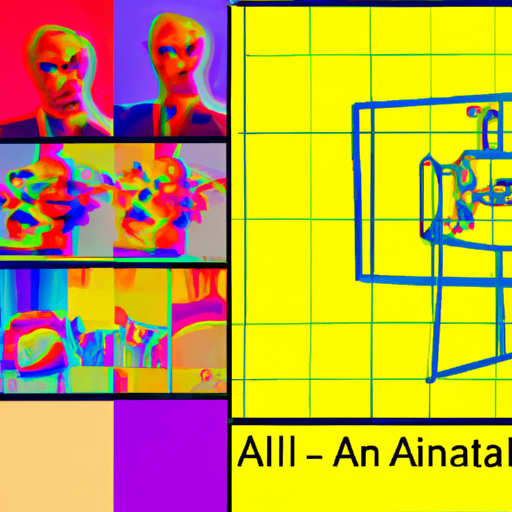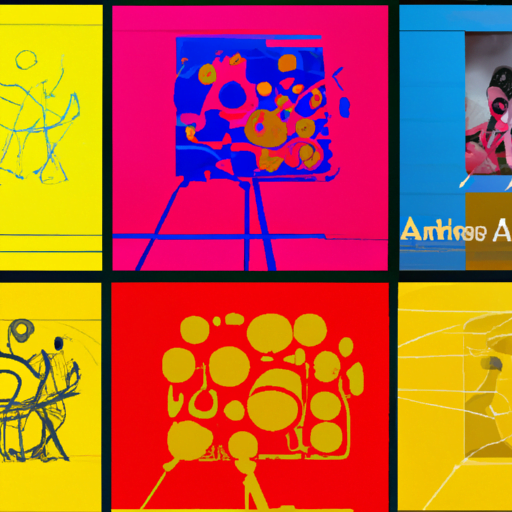
-
Table of Contents
- AI in Educational Graphics: Visualizing Complex Concepts
- The Power of Visuals in Education
- The Role of AI in Educational Graphics
- 1. Automated Graphic Generation
- 2. Adaptive Learning
- 3. Interactive Visualizations
- 4. Natural Language Processing
- Case Studies: AI in Educational Graphics
- 1. Smart Sparrow
- 2. Cognii
- The Benefits of AI in Educational Graphics
- Conclusion
AI in Educational Graphics: Visualizing Complex Concepts

Education plays a crucial role in shaping the minds of individuals and preparing them for the challenges of the future. However, the traditional methods of teaching and learning often struggle to effectively convey complex concepts to students. This is where the power of artificial intelligence (AI) comes into play. By harnessing the capabilities of AI, educational graphics can be transformed into dynamic and interactive tools that enhance understanding and engagement. In this article, we will explore the impact of AI in educational graphics and how it can revolutionize the way we learn.
The Power of Visuals in Education
Visuals have long been recognized as a powerful tool for learning. Research has shown that the human brain processes visual information more efficiently than text, making it easier for students to understand and retain knowledge. Educational graphics, such as diagrams, charts, and infographics, provide a visual representation of complex concepts, making them more accessible and engaging for learners.
However, creating effective educational graphics is not an easy task. It requires a deep understanding of the subject matter, as well as the ability to present information in a clear and concise manner. This is where AI can make a significant difference.
The Role of AI in Educational Graphics
AI has the potential to revolutionize the field of educational graphics by automating the creation process and enhancing the quality of visuals. Here are some ways in which AI is being used in this domain:
1. Automated Graphic Generation
AI algorithms can analyze large amounts of data and generate graphics automatically. For example, in the field of biology, AI can analyze DNA sequences and create visual representations of genetic structures. This not only saves time for educators but also ensures accuracy and consistency in the graphics.
2. Adaptive Learning
AI-powered educational platforms can analyze the learning patterns and preferences of individual students and adapt the graphics accordingly. For instance, if a student is struggling with a particular concept, the AI system can generate personalized graphics that cater to their learning style, making it easier for them to grasp the concept.
3. Interactive Visualizations
AI can enable the creation of interactive educational graphics that allow students to explore and manipulate complex concepts. For example, in physics, AI-powered simulations can help students visualize the behavior of objects in different scenarios, making abstract concepts more tangible and easier to understand.
4. Natural Language Processing
AI algorithms can analyze text-based educational content and generate relevant graphics automatically. For instance, if a student is reading a textbook on history, the AI system can identify key concepts and events and generate visual representations, such as timelines or maps, to aid comprehension.
Case Studies: AI in Educational Graphics
Let’s take a look at some real-world examples of how AI is being used to enhance educational graphics:
1. Smart Sparrow
Smart Sparrow is an AI-powered educational platform that uses adaptive learning techniques to create personalized learning experiences. It provides interactive educational graphics that adapt to the needs of individual students, helping them understand complex concepts more effectively. For example, in a biology course, Smart Sparrow can generate interactive diagrams that allow students to explore the structures of different organisms.
2. Cognii
Cognii is an AI platform that uses natural language processing to provide personalized feedback to students. It can analyze written responses and generate visualizations that help students understand their strengths and weaknesses. For instance, if a student is struggling with grammar, Cognii can generate visualizations that highlight common errors and provide suggestions for improvement.
The Benefits of AI in Educational Graphics
The integration of AI in educational graphics offers several benefits for both educators and students:
- Improved Understanding: AI-powered graphics can simplify complex concepts, making them easier to understand and remember.
- Personalized Learning: AI can adapt graphics to cater to the individual learning styles and preferences of students, enhancing engagement and retention.
- Time and Cost Savings: Automated graphic generation saves time for educators, allowing them to focus on other aspects of teaching.
- Enhanced Interactivity: AI enables the creation of interactive graphics that promote active learning and deeper understanding.
- Consistency and Accuracy: AI algorithms ensure consistency and accuracy in educational graphics, reducing the risk of misinformation.
Conclusion
The integration of AI in educational graphics has the potential to revolutionize the way we learn and teach. By automating the creation process, personalizing learning experiences, and enhancing interactivity, AI can make complex concepts more accessible and engaging for students. The benefits of AI in educational graphics are numerous, from improved understanding and engagement to time and cost savings. As AI continues to advance, we can expect to see even more innovative applications in the field of education, empowering learners and educators alike.
